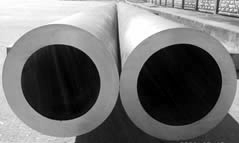

When it comes to stainless steel tubing, grades 304 and 316 are among the most widely used. 304 vs 316 Stainless Steel: What's the difference? In addition, 316L is an extra low carbon variation that helps avoid carbide precipitation due to welding. 316 Stainless TubingĪpplications: 316 stainless steel can be found in pumps, valves, textile and chemical equipment, pulp & paper and marine applications.Ĭharacteristics: 316 stainless steel tubing is more resistant to corrosion and pitting than 304 stainless steel and offers higher strength at elevated temperatures. This variation offers the same corrosion resistance as 304, but with slightly lower mechanical properties.

An extra low carbon variation, called 304L, avoids harmful carbide precipitation due to welding. 304 stainless steel tubing offers good formability and can be readily welded by all common methods. 304 stainless steel is most notably present in industrial applications and kitchen equipment.Ĭharacteristics: As a heat-resistant grade, 304 stainless steel tubing offers good corrosion resistance to many chemical corrodents, as well as industrial atmospheres. Type: 180 Polish, Mill Finish, Seamless, Welded-OrnamentalĪpplications: 304 stainless steel is the most widely used of all stainless steel grades. Type: 180 Polish, Mill Finish, Welded-Ornamental Our inventory includes the following stainless tubing selections: Shape With a focus on 304 stainless steel tubing and 316 stainless steel tubing, we offer both a wide array of diameters and thicknesses and the ability to customize your order via our stainless tube processing services. In fact, Ryerson is a leading stainless steel supplier, offering one of the broadest stainless product selections in North America. Whether round, rectangle or square, you’ll find Ryerson’s stainless steel tubing inventory to be among the best in the industry.


 0 kommentar(er)
0 kommentar(er)
